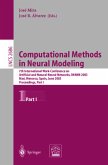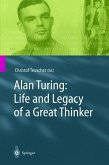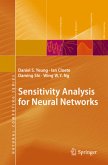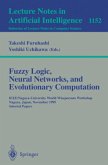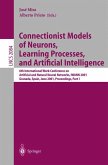Turing's connectionism provides a detailed and in-depth analysis of Turing's almost forgotten ideas on connectionist machines. In a little known paper entitled "Intelligent Machinery", Turing already investigated connectionist models as early as 1948. Unfortunately, his work was dismissed by his employer as a "schoolboy essay" and went unpublished until 1968, 14 years after his death.In this book, Christof Teuscher analyzes all aspects of Turing's "unorganized machines". Turing himself also proposed a sort of genetic algorithm to train the networks. This idea has been resumed by the author and genetic algorithms are used to build and train Turing's unorganized machines. Teuscher's work starts from Turing's initial ideas, but importantly goes beyond them. Many new kinds of machines and new aspects are considered, e.g., hardware implementation, analysis of the complex dynamics of the networks, hypercomputation, and learning algorithms.
Alan Mathison Turing (1912-1954) was the first to carry out substantial re search in the field now known as Artificial Intelligence (AI). He was thinking about machine intelligence at least as early as 1941 and during the war cir culated a typewritten paper on machine intelligence among his colleagues at the Government Code and Cypher School (GC & CS), Bletchley Park. Now lost, this was undoubtedly the earliest paper in the field of AI. It probably concerned machine learning and heuristic problem-solving; both were topics that Turing discussed extensively during the war years at GC & CS, as was mechanical chess [121]. In 1945, the war in Europe over, Turing was recruited by the National Physical Laboratory (NPL)! in London, his brief to design and develop an electronic stored-program digital computer-a concrete form of the universal Turing machine of 1936 [185]. Turing's technical report "Proposed Electronic 2 Calculator" , dating from the end of 1945 and containing his design for the Automatic Computing Engine (ACE), was the first relatively complete spec ification of an electronic stored-program digital computer [193,197]. (The document "First Draft of a Report on the EDVAC", produced by John von Neumann and the Moore School group at the University of Pennsylvania in May 1945, contained little engineering detail, in particular concerning elec tronic hardware [202].
Alan Mathison Turing (1912-1954) was the first to carry out substantial re search in the field now known as Artificial Intelligence (AI). He was thinking about machine intelligence at least as early as 1941 and during the war cir culated a typewritten paper on machine intelligence among his colleagues at the Government Code and Cypher School (GC & CS), Bletchley Park. Now lost, this was undoubtedly the earliest paper in the field of AI. It probably concerned machine learning and heuristic problem-solving; both were topics that Turing discussed extensively during the war years at GC & CS, as was mechanical chess [121]. In 1945, the war in Europe over, Turing was recruited by the National Physical Laboratory (NPL)! in London, his brief to design and develop an electronic stored-program digital computer-a concrete form of the universal Turing machine of 1936 [185]. Turing's technical report "Proposed Electronic 2 Calculator" , dating from the end of 1945 and containing his design for the Automatic Computing Engine (ACE), was the first relatively complete spec ification of an electronic stored-program digital computer [193,197]. (The document "First Draft of a Report on the EDVAC", produced by John von Neumann and the Moore School group at the University of Pennsylvania in May 1945, contained little engineering detail, in particular concerning elec tronic hardware [202].


